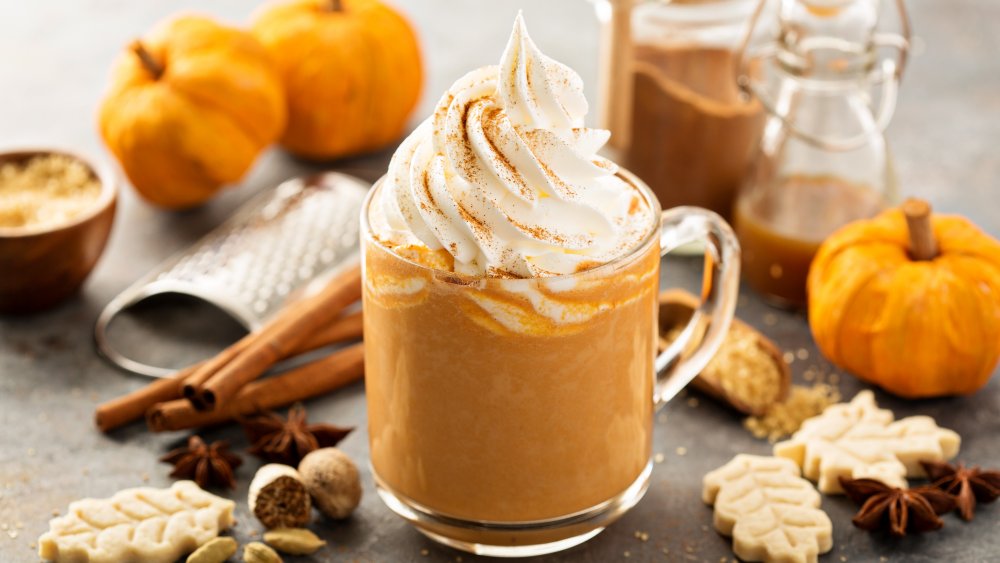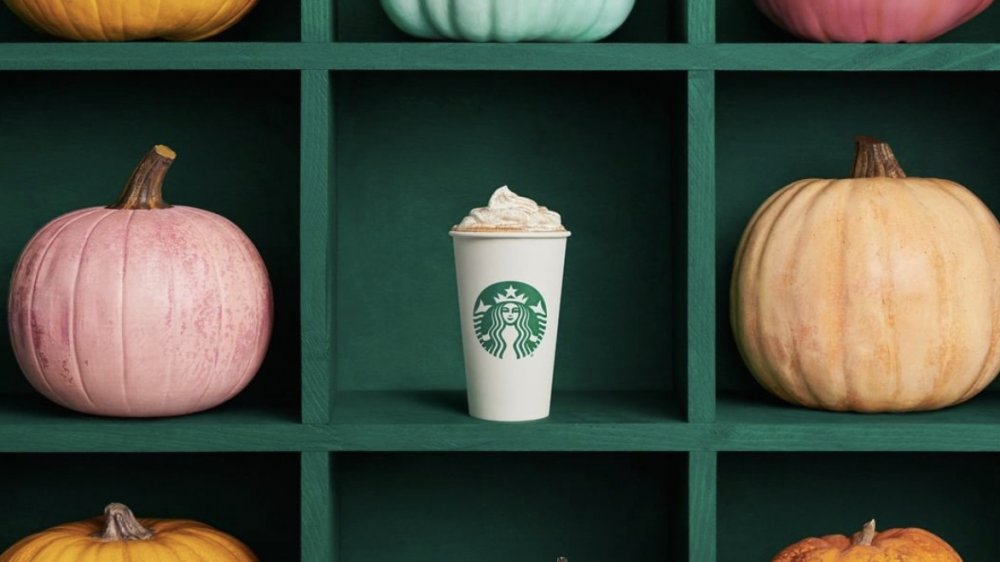This Is Where The Flavor Of Pumpkin Spice Comes From
If you've ever had a homemade pumpkin spice latte, it probably tasted a bit more like chai tea than it did a liquid piece of pumpkin pie. The reason for this is simple: the pumpkin spice flavor that becomes so ubiquitous this time of year doesn't actually come from the spices rattling around at the back of your kitchen cabinets (which are not only weaker in flavor, but also not very water soluble), it comes from flavoring chemicals designed by professional flavorists (via Inverse).
Now, this isn't as nefarious as it might sound. According to food chemist Kantha Shelke, a spokesperson for the Institute of Food Technologists, it's more sustainable to use these nature-identical flavor molecules when you're trying to achieve consistent flavor on a large scale, which companies like Starbucks definitely are (via c&en). In fact, while a real pumpkin pie contains 340 flavor compounds or more, it only takes about five to ten percent of these compounds to trick our brain into thinking we're sipping on pie. This means instead of cinnamon, mass-produced pumpkin spice products contain cinnamic aldehydes, and instead of cloves or allspice, those same product will contain eugenol. Finally, instead of nutmeg or ginger, flavorists use terpenes such as sabinene and zingiberene to provide those flavors. These nature-identical flavor molecules are not only more consistent in taste, but also cheaper and easier to work with than the real spices (via NPR). Or, at least, they were.
The controversy of pumpkin-free pumpkin spice
If you remember John Oliver calling pumpkin spice syrup "science goo" (via NPR) or blogger Food Babe (real name Vani Hari) ragging on the pumpkin-free ingredient list of the original Starbucks pumpkin spice latte, you might also remember the outcome (via The Washington Post). Namely, that Starbucks re-formulated their "most popular seasonal beverage of all time," according to ABC News, to include real pumpkin puree and a topping made of cinnamon, ginger, nutmeg, and clove.
However, this change didn't exactly make the Starbucks drink into a healthy option. According to Eat This, Not That!, Starbucks' new pumpkin spice latte still contains the most fat and saturated fat when compared to competitors like Peet's, McDonald's, and Dunkin'. For a lower-sugar and lower-calorie version, try the psl from Le Pain Quotidien, which contains 34 grams of sugar (compared to Starbucks' 50), and only 270 calories for a large size with whole milk (via Food Network).

